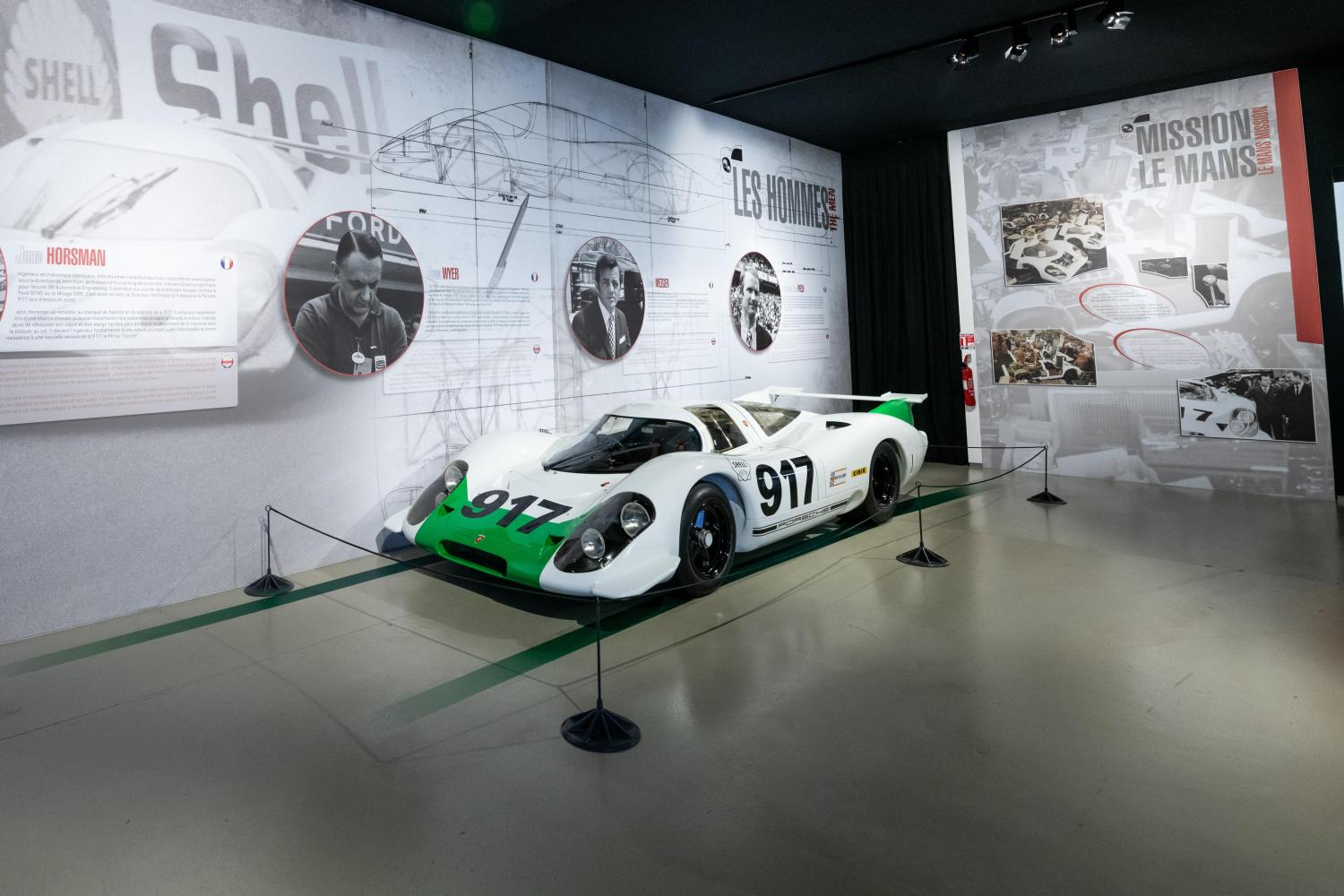Porsche 917 – chassis 917-001
Chassis number 001 is a historic model despite never having competed in a race. Sporting a white livery tipped with a green nose and the three digits boldly marked on the front hood, it was revealed to the world at the Geneva Motor Show in March 1969, and then to officials from the CSI on 21 April at the Porsche plant, along with the 24 other examples required for homologation. On 30 September, chassis 001 became the first 917 to be painted in the sky blue-and-orange colours of Gulf for the Earl’s Court show in London, officially announcing the partnership between Porsche and John Wyer’s outfit.
Porsche 917 – chassis 917-015
Chassis number 015 chalked up the 917’s maiden win in a 24-hour race in the opening round of the 1970 World Sportscar Championship at Daytona. In a 1-2 finish for JWA Engineering, Pedro Rodríguez and Leo Kinnunen edged out stablemates Jo Siffert and Brian Redman. In 1971 Rodríguez, this time partnering Jackie Oliver, scored another significant victory in the 1000 km of Spa-Francorchamps, at an average speed of 249 kph.
Porsche 917 – chassis 917-045
JWA Engineering fielded the last 917 “Langheck” ever built in the 1971 Le Mans 24 Hours in the famous sky blue and orange of Gulf. Derek Bell and Jo Siffert shared the wheel. When it was bequeathed to the 24 Hours Museum, it sported the Martini livery of the 917 LH driven by Vic Elford and Gérard Larrousse in 1971, but was restored to its original colours in 2020.
Porsche 917 16-Cylinder Spyder
Following the appearance of the 917 PA as a Spyder variant in the 1969 Can-Am Challenge Cup, Porsche mounted what was then its most powerful naturally aspirated engine – a 6.5-litre, 800-hp, 16-cylinder monster – in a 917 chassis. The prototype remained a test mule and was never fielded in a race. Porsche finally opted to go down the turbocharged route in Can-Am, securing two successive titles in 1972 and ’73.
Porsche 917 – chassis 917-030
After competing in just one race in 1971, with Gérard Larrousse and Helmut Marko at the wheel, this 917 was reconditioned in 1974 for Count Rossi for road use, with a leather interior, exterior mirrors, a modified exhaust system and the removal of the vertical fins, characteristic of the 1971 version of the 917 K.
Porsche 917 K – chassis 917-053
Made of magnesium to reduce the car’s weight by around 50 kg, this 917 became Porsche’s second winner of the 24 Hours of Le Mans, in 1971. The victorious drivers, Helmut Marko of Austra and Gijs van Lennep of the Netherlands set a new distance record that stood until 2010.
Porsche 917/10
After two consecutive World Sportscar Championship titles in 1970 and ’71, the 917 crossed the Atlantic to take up the Can-Am challenge. To compete with their rivals’ 7-litre naturally aspirated V8s, the flat-12 was bored out to 5 litres and turbochargers added. The 917/10 won six races out of nine in the 1972 season, with five going to American George Follmer who took the Drivers’ title.
The '917, made for Le Mans' exhibition tells the story of one of the greatest machines ever built to win the 24 Hours of Le Mans. Authentic 917s can be admired in an outstanding setting at the Museum until 10 January 2021.


